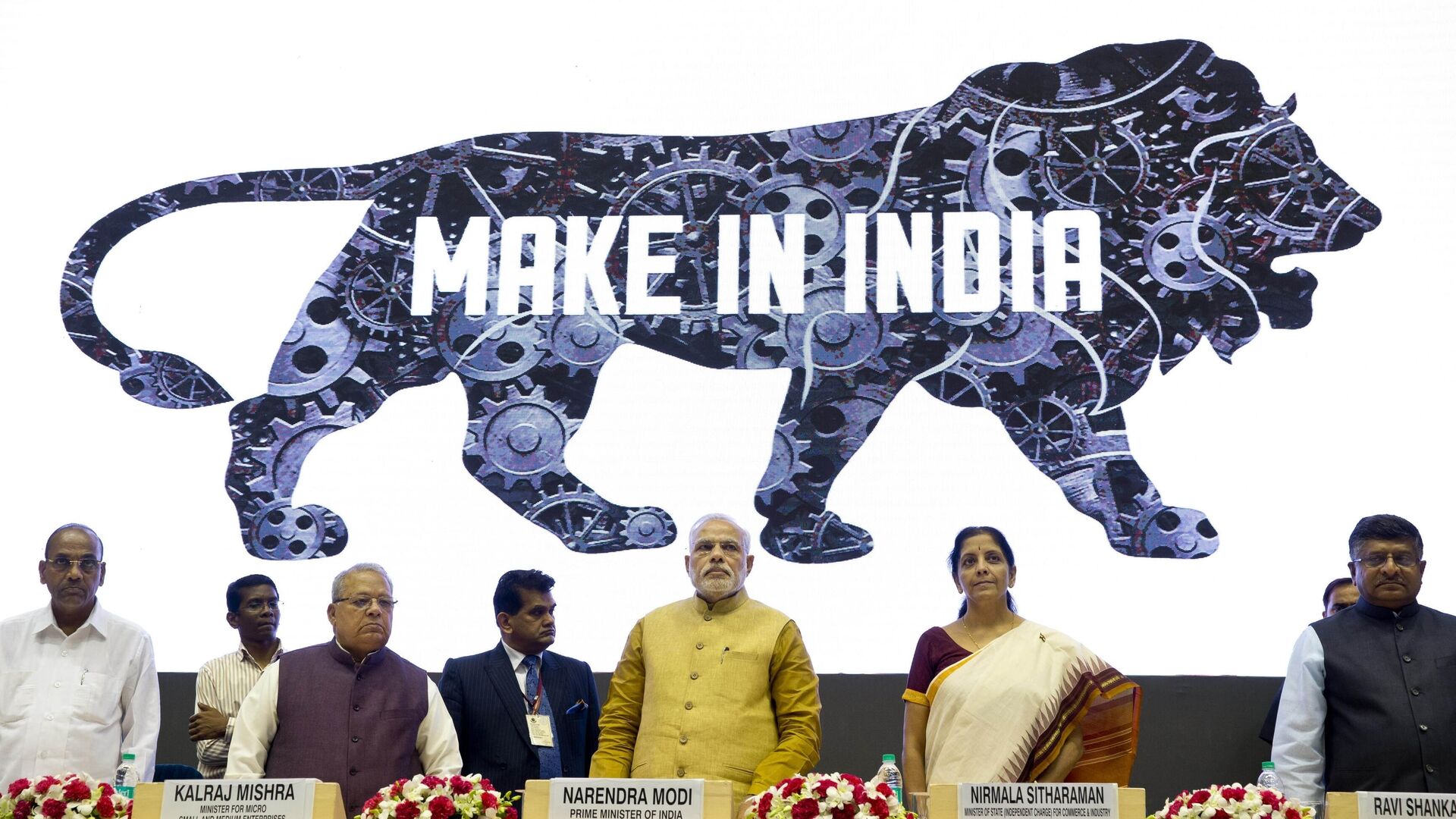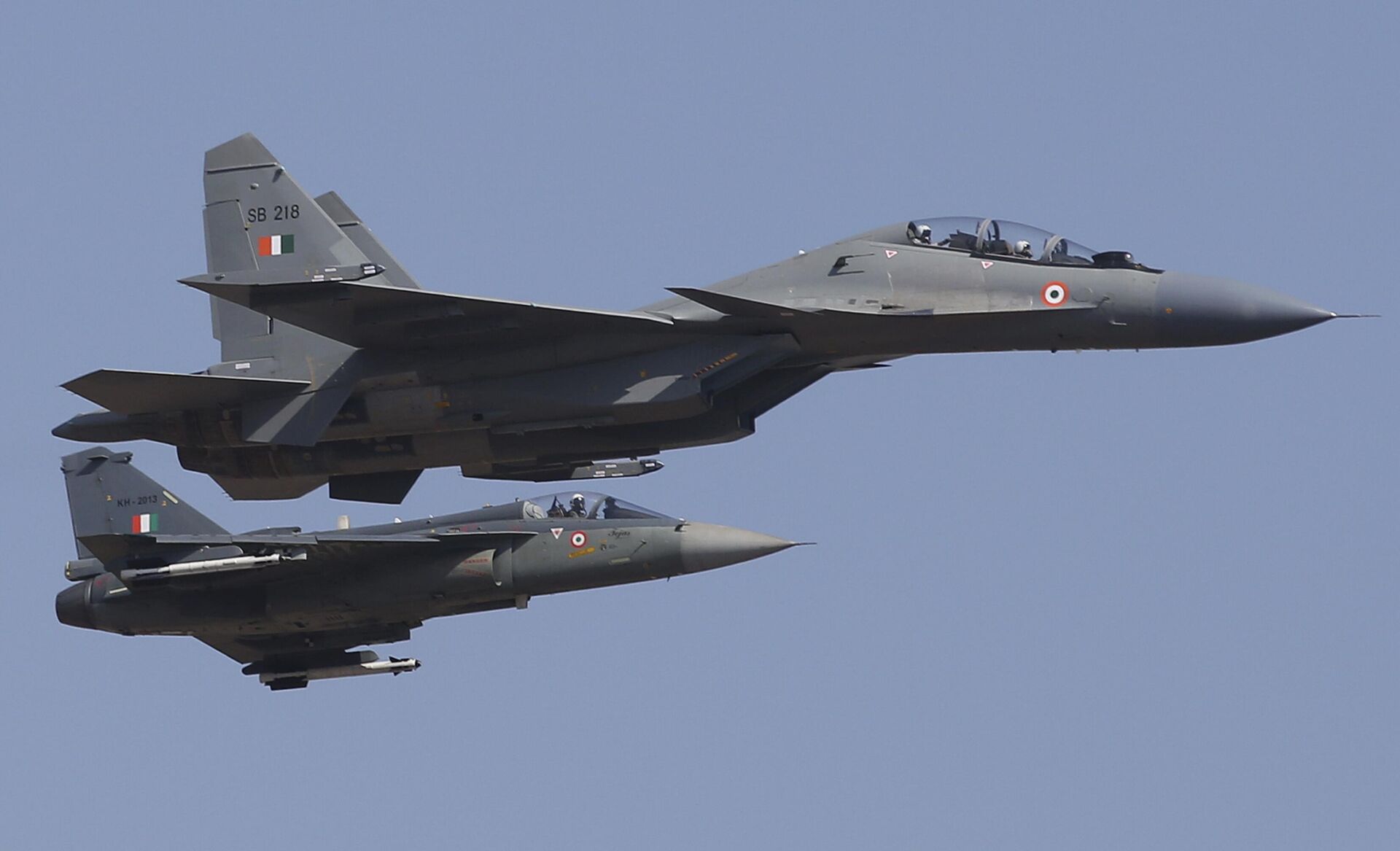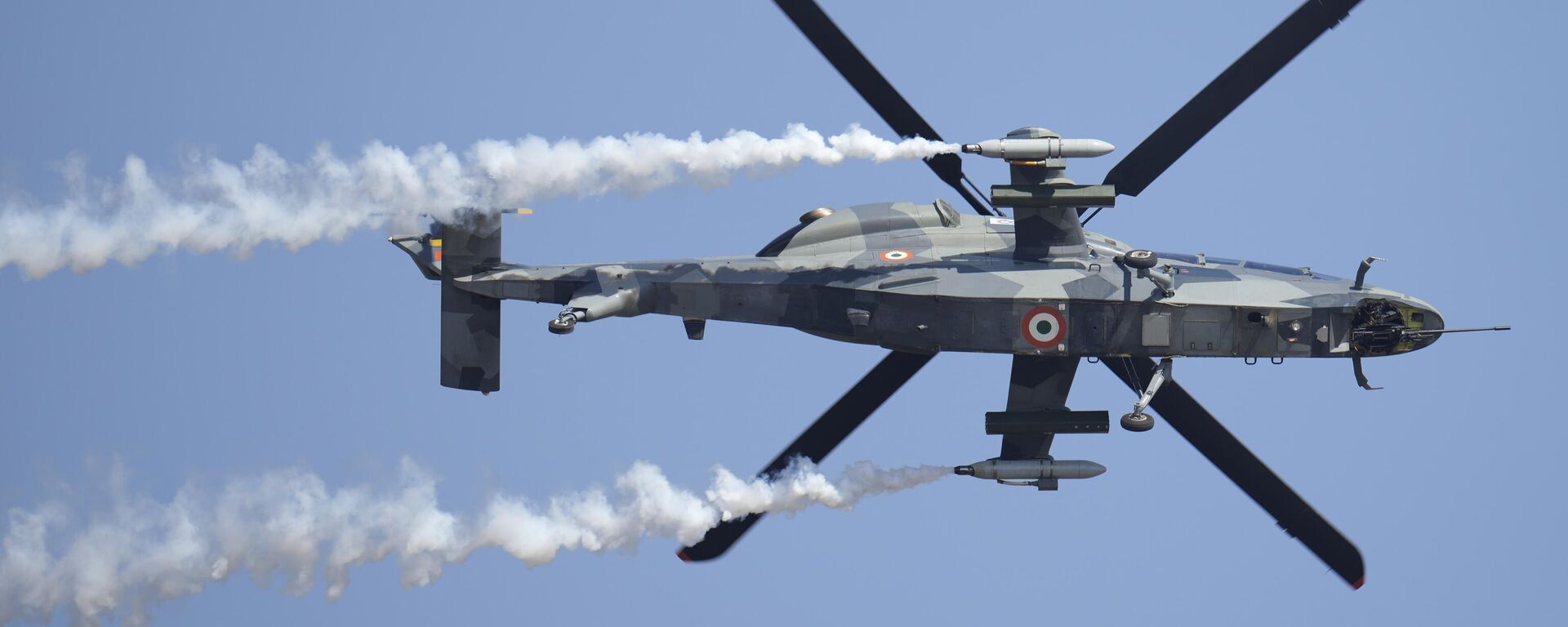https://sputniknews.in/20240119/india-needs-to-ditch-western-defence-components-for-the-sake-of-make-in-india-6269063.html
India Needs to Ditch Western Defense Components for the Sake of 'Make in India' Project
India Needs to Ditch Western Defense Components for the Sake of 'Make in India' Project
Sputnik India
India must ditch Western defense components for locally-made ones to do away with its continued dependency, military analyst Vijainder K Thakur explains in his column for Sputnik India.
2024-01-19T20:07+0530
2024-01-19T20:07+0530
2024-01-19T20:37+0530
sputnik opinion
india
germany
us
hindustan aeronautics limited (hal)
mod russia
lca tejas
make in india
https://cdn1.img.sputniknews.in/img/07e7/0a/05/4625072_0:50:3463:1998_1920x0_80_0_0_3c99022b6e43e1f636f0d1d5d27e09fd.jpg
Both India's public and private sector defense industries are on a trajectory that is increasing India's dependence on Western countries. Critical weapon system components, such as aero engines, are not being acquired under transfer of technology (ToT), making the country susceptible to future sanctions. Local manufacture of engines makes little sense if India remains dependent on the original equipment manufacturer (OEM) for critical materials, manufacturing equipment and licenses for local manufacture.Hindustan Aeronautics Limited's (HAL's) Hindustan 228 feeder transport aircraft project is a case in point. It illustrates how the government's vision of an India that is self-reliant in defense technology and production is being surreptitiously hijacked in the name of the Make-in-India project. Such a move only increases India's dependence on the West.Hindustan-228HAL is developing the Hindustan-228 aircraft, based on the Dornier Do-228 platform. The aircraft will be manufactured at HAL’s Transport Aircraft Division (TAD) at Kanpur, which has been the production agency for the Do-228 since 1983.Dornier DO-228The DO-228 is a 19 seat, high winged, rugged and fuel efficient aircraft powered by twin Garrett TPE 331-5-252D engines, each driving a four bladed reversible pitch, fully feathering propeller.It is capable of short take-off and landing from a semi prepared runway and has adequate range to fulfil multiple roles.The aircraft has HAL has so far manufactured more than 150 military Do-228 aircraft following Transfer of Technology from Germany. Two civil Do-228 aircraft have also been produced by HALHAL has been continuously upgrading the Do-228. The aircraft now features a glass cockpit. HAL has fitted several role specific equipment on this aircraft to meet the specialised requirement of its customers.Garrett TPE 331-5Garrett developed the TPE 331 as a clean sheet design military turboprop in 1959 with 429 shp power output. According to Wikipedia, the first TPE331 engine was produced in 1963, installed on the Aero Commander in 1964 and put into production on the Aero Commander Turbo Commander in June 1965.Many variants of the simple in design, single shaft turboprop engine have been built since then; they power a large number of Commuter and Corporate Aircraft.HAL manufactures, overhauls and repairs the Garrett TPE 331-5 Turbo prop Engine for various customers under licence from Garrett Engine Division of Honeywell Company since 1988.The engine belongs to a popular series of small Turboprop Engines powering a large number of Commuter and Corporate Aircraft.Some important specifications are as follows.It features a propeller control system, anti-icing and foreign object damage resistance, reverse thrust and negative torque sensing facilities.Its reverse flow Gas Turbine with a small frontal area, results in better dry specifics and easier airframe integration.HTT-40 PowerplantHAL's HTT-40 trainer aircraft is powered by a variant of the Garret TPE, TPE331-12B, a 1,100 shp engine derated to 950 shp.HAL Bets Heavy on the TPE 331There is no denying the versatility of the DO-228 aircraft as a commercial feederliner. HAL's decision to reinvent the DO-228 as Hindustan 228 would also be above questioning provided HAL is targeting the commercial aviation sector and domestic airlines have shown adequate interest to justify production restart. Unfortunately, that is not the case. No private airline is known to have shown any real interest in the aircraft.It's highly likely that HAL is depending on MoD orders for the Hindustan 228. In which case, HAL's decision to rely on the oldest still in production turboprop engine in the world is highly questionable. Even more questionable is the fact that the 1950s design engine is being produced in India by HAL under licence from US based Honeywell, not ToT.It's bad enough that HAL cannot design a simple single shaft turboprop in 2024, what is totally unacceptable is that HAL will be producing the engine in India under licence, not ToT!And this is happening in the guise of Make-in-India!TAPAS SetbackIn January 2024, it was widely reported in the Indian press that the MoD had withdrawn mission mode funding for DRDO's TAPAS MALE drone project because of the failure of the drone to meet PSQRs relating to operational ceiling, endurance and payload.India's major aircraft development projects have repeatedly suffered debilitating setbacks because the designers didn't develop an airframe around a proven engine. Instead, they built airframes using interim under performing powerplants. TAPAS was the third such setback after the Marut HF-24 and LCA Tejas.Under the circumstances, HAL's decision to develop the Hindustan 228 without ToT for local manufacture of the Garret TPE 331-5 makes little sense. The fact that HAL is also using a Garret TPE 331 variant to power the HTT-40 only increases the urgency of acquiring ToT so that we are not dependent on Honeywell in perpetuity.Garret TPE 331-5 for MALE DronePerhaps the most compelling reason to acquire Garret TPE 331-5 manufacturing ToT may well be to quickly develop a turboprop variant to power our drones.The MQ-9B SkyGuardian drone is powered by a single TPE331-10GD turboprop engine. Honeywell optimised the engine for high-altitude and long-endurance operations, making it suitable for the MQ-9B's extensive surveillance and reconnaissance missions.The TPE 331-5 would also need to be tweaked and optimised for flying at 30,000 ft but in the interim it could easily power a MALE drone with the following specsA private sector company like TAS would be able to develop a capable drone based on the MQ-9B design powered by the TPE 331-5 in less than a year.
https://sputniknews.in/20231204/emerging-powerhouse-in-the-sky-india-surges-ahead-with-prachand-helicopter-launch-5703312.html
india
germany
us
Sputnik India
feedback.hindi@sputniknews.com
+74956456601
MIA „Rossiya Segodnya“
2024
News
en_IN
Sputnik India
feedback.hindi@sputniknews.com
+74956456601
MIA „Rossiya Segodnya“
Sputnik India
feedback.hindi@sputniknews.com
+74956456601
MIA „Rossiya Segodnya“
make in india, indian weapons, indian military,
make in india, indian weapons, indian military,
India Needs to Ditch Western Defense Components for the Sake of 'Make in India' Project
20:07 19.01.2024 (Updated: 20:37 19.01.2024) India must replace Western defense components with locally-made ones to do away with its continued dependency, military analyst Vijainder K Thakur explains in his column for Sputnik India.
Both India's public and private sector defense industries are on a trajectory that is increasing India's dependence on Western countries.
Critical weapon system components, such as aero engines, are not being acquired under transfer of technology (ToT), making the country susceptible to future sanctions.
Local manufacture of engines makes little sense if India remains dependent on the original equipment manufacturer (OEM) for critical materials, manufacturing equipment and licenses for local manufacture.
Hindustan Aeronautics Limited's (HAL's) Hindustan 228 feeder transport aircraft project is a case in point. It illustrates how the government's vision of an India that is self-reliant in defense technology and production is being surreptitiously hijacked in the name of the Make-in-India project. Such a move only increases India's dependence on the West.
HAL is developing the Hindustan-228 aircraft, based on the Dornier Do-228 platform. The aircraft will be manufactured at HAL’s Transport Aircraft Division (TAD) at Kanpur, which has been the production agency for the Do-228 since 1983.
The DO-228 is a 19 seat, high winged, rugged and fuel efficient aircraft powered by twin Garrett TPE 331-5-252D engines, each driving a four bladed reversible pitch, fully feathering propeller.
It is capable of short take-off and landing from a semi prepared runway and has adequate range to fulfil multiple roles.
a maximum take-off weight of 6400 kg,
maximum payload of 1903 Kg,
maximum cruise speed of 428 kph and a service ceiling of 4299 m.
HAL has so far manufactured more than 150 military Do-228 aircraft following Transfer of Technology from Germany. Two civil Do-228 aircraft have also been produced by HAL
HAL has been continuously upgrading the Do-228. The aircraft now features a glass cockpit. HAL has fitted several role specific equipment on this aircraft to meet the specialised requirement of its customers.
Garrett developed the TPE 331 as a clean sheet design military turboprop in 1959 with 429 shp power output. According to Wikipedia, the first TPE331 engine was produced in 1963, installed on the Aero Commander in 1964 and put into production on the Aero Commander Turbo Commander in June 1965.
Many variants of the simple in design, single shaft turboprop engine have been built since then; they power a large number of Commuter and Corporate Aircraft.
HAL manufactures, overhauls and repairs the Garrett TPE 331-5
Turbo prop Engine for various customers under licence from Garrett Engine Division of Honeywell Company since 1988.
The engine belongs to a popular series of small Turboprop Engines powering a large number of Commuter and Corporate Aircraft.
Some important specifications are as follows.
Takeoff power | 940 shp |
Flat-rated power | 840 shp |
Fuel consumption | 0.534 lb/hp-hr |
It features a propeller control system, anti-icing and foreign object damage resistance, reverse thrust and negative torque sensing facilities.
Its reverse flow Gas Turbine with a small frontal area, results in better dry specifics and easier airframe integration.
HAL's HTT-40 trainer aircraft is powered by a variant of the Garret TPE, TPE331-12B, a 1,100 shp engine derated to 950 shp.
HAL Bets Heavy on the TPE 331
There is no denying the versatility of the DO-228 aircraft as a commercial feederliner. HAL's decision to reinvent the DO-228 as Hindustan 228 would also be above questioning provided HAL is targeting the commercial aviation sector and domestic airlines have shown adequate interest to justify production restart. Unfortunately, that is not the case. No private airline is known to have shown any real interest in the aircraft.
It's highly likely that HAL is depending on MoD orders for the Hindustan 228. In which case, HAL's decision to rely on the oldest still in production turboprop engine in the world is highly questionable. Even more questionable is the fact that the 1950s
design engine is being produced in India by HAL under licence from US based Honeywell, not ToT.
It's bad enough that HAL cannot design a simple single shaft turboprop in 2024, what is totally unacceptable is that HAL will be producing the engine in India under licence, not ToT!
And this is happening in the guise of Make-in-India!
In January 2024, it was widely reported in the Indian press that the MoD had withdrawn mission mode funding for DRDO's TAPAS MALE drone project because of the failure of the drone to meet PSQRs relating to operational ceiling, endurance and payload.
India's major aircraft development projects have repeatedly suffered debilitating setbacks because the designers didn't
develop an airframe around a proven engine. Instead, they built airframes using interim under performing powerplants. TAPAS was the third such setback after the Marut HF-24 and LCA Tejas.
Under the circumstances, HAL's decision to develop the Hindustan 228 without ToT for local manufacture of the Garret TPE 331-5 makes little sense. The fact that HAL is also using a Garret TPE 331 variant to power the HTT-40 only increases the urgency of acquiring ToT so that we are not dependent on Honeywell in perpetuity.
Garret TPE 331-5 for MALE Drone
Perhaps the most compelling reason to acquire Garret TPE 331-5 manufacturing ToT may well be to quickly develop a turboprop variant to power our drones.
The MQ-9B SkyGuardian drone is powered by a single TPE331-10GD turboprop engine. Honeywell optimised the engine for high-altitude and long-endurance operations, making it suitable for the MQ-9B's extensive surveillance and reconnaissance missions.
The TPE 331-5 would also need to be tweaked and optimised for flying at 30,000 ft but in the interim it could easily power a MALE drone with the following specs
Max Payload (kg) | 500 |
Endurance (hrs) | 20 |
Operational Ceiling (ft) | 20,000 |
A private sector company like TAS would be able to develop a capable drone based on the MQ-9B design powered by the TPE 331-5 in less than a year.



